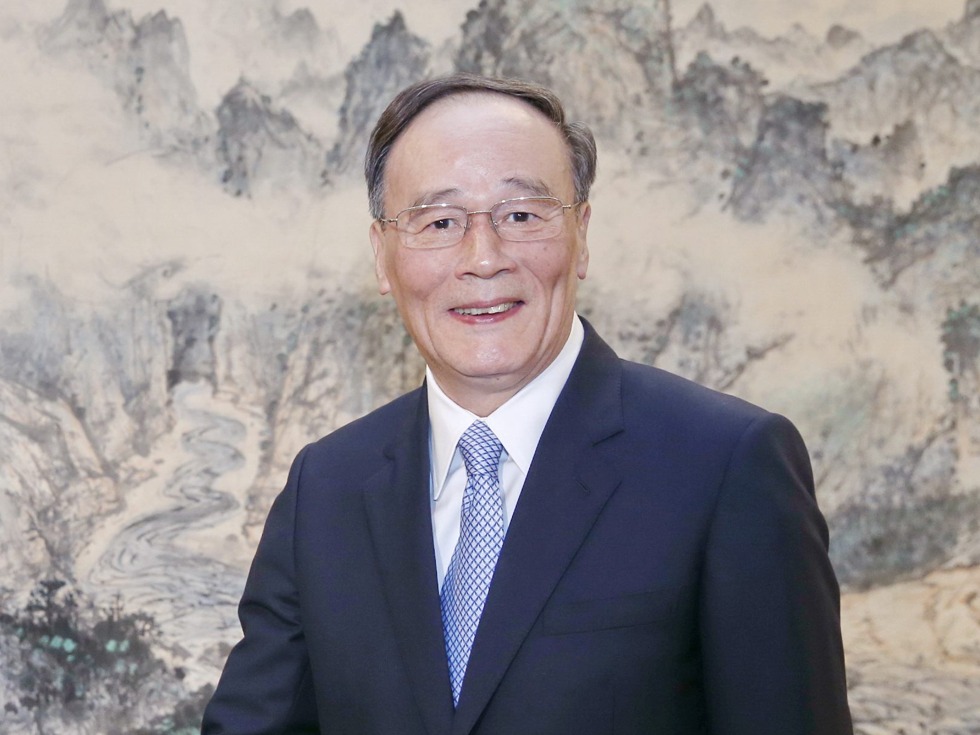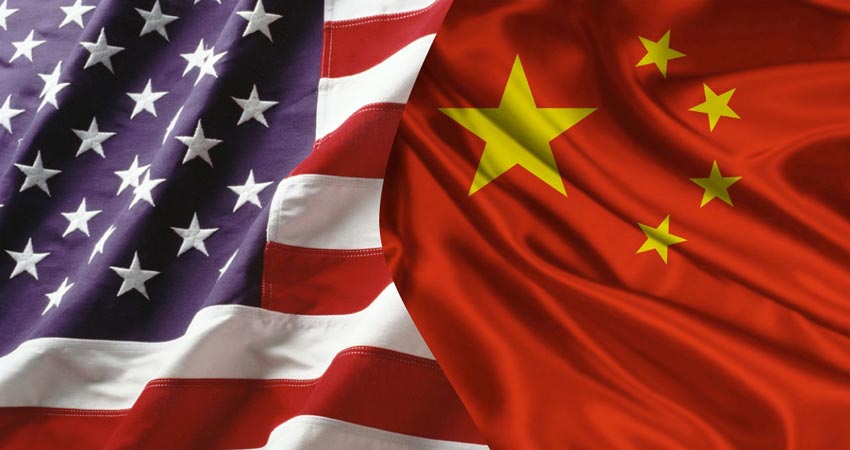It is a Reality that the Chinese and American Economies Are Mutually Indispensible, and Neither Side Can Do Without the Other Side
- Caifu Magazine | by Star
- EN
On January 23, Wang Qishan, Vice President of the People’s Republic of China, delivered a speech at the 2019 Annual Meeting of the World Economic Forum. He said, “It is a reality that the Chinese and American economies are mutually indispensible, and neither side can do without the other side.” He added, “China’s door of opening-up will open even wider. With 1.4 billion people, the Chinese market is very attractive. China is willing to share its development opportunities with other countries.”

Addressing the imbalances of global development: Making the pie bigger while looking for ways to share it in a more equitable way
With respect to the imbalances of global economic development, Wang Qishan pointed out in his speech that we must take a targeted approach to addressing the problems that have emerged in the process of economic globalization. Development imbalances need to be resolved through further development.
Countries need to press ahead with structural reform, strike a right balance between equity and efficiency, adopt effective policy measures to prevent the worsening of income inequality and fend off the impact on some regions and industries caused by new technologies and market competition, so that all people stand to gain from continued development.
He said, “What we need to do is make the pie bigger while looking for ways to share it in a more equitable way. The last thing we should do is to stop making the pie and just engage in a futile debate on how to divide it. Shifting blame for one’s own problems onto others will not resolve the problems.”
China’s economic development will continue and be sustainable
When delivering the speech, Wang Qishan said, “Many foreign friends have often put this question to me: What has made it possible for China to achieve so much in development and progress? And how will a stronger China engage the rest of the world? Well, these questions can be answered from historical, cultural and philosophical perspectives. Given the close linkage between the past, the present and the future, one needs to learn about China’s past in order to understand its present and forecast its future.”
When answering questions after his speech, he also responded to questions about whether China is approaching the end of upswing in economic development and whether there is the possibility of an economic crisis. Wang Qishan said, “Be it a blessing, be it a bad luck, we cannot shy away from it”. He drew an analogy that the crisis is like that the global economy catches a cold.
With respect to whether China is approaching the end of upswing in economic development, there are all sorts of views. Someone is saying that China is approaching the end of its growth, or has already reached the end of the growth. However, “China’s economy and China’s growth will continue and be sustainable.” He said that, if China runs its own affairs well and develops well, the integration and complementarity between China and the world will be better. This in itself is a contribution to all mankind and the world.
Working together to shape the global architecture in the age of the fourth industrial revolution
In his speech, Wang Qishan pointed out that new technologies bring opportunities, but they also create risks and challenges. We must work together to shape the global architecture in the age of the fourth industrial revolution with the vision for creating a better future for all mankind.
We need to uphold the security of all mankind. We need to explore the adoption of relevant rules and standards in a phased way, while leaving broad space for the dissemination and application of scientific discovery and technological innovation. We need to accommodate in a balanced manner the interests of all countries, especially those of emerging markets and developing countries. One should not ask the whole world to address only the security concern and comply only with the standards of developed countries or individual countries.
It is imperative to respect national sovereignty and refrain from seeking technological hegemony or interfering in other countries’ domestic affairs. We need to uphold multilateralism, and jointly build a system of rules for technology and new international cooperation framework featuring peace, security, democracy, transparency, inclusiveness and mutual benefit, so that all people can gain from technological innovation. We need to uphold social equity and justice, and ensure that technological innovations are guided by us humans, meet our needs and are compatible with our values. We need to improve policy environment and promote social prosperity and stability.
When answering questions, Wang Qishan once again explained that, in the fourth industrial revolution, the driving forces for development are coming from science and technology. Industry 4.0 heralds the new drivers of technological progress for development, bound to give a new outlook for development and bring hopes and business for humanity. But at the same time, it is bound to challenge the existing standards and rules. Therefore, it is up to every one of us to take a realistic and pragmatic approach to make corresponding changes in keeping with the times, and to gradually change the existing standards and rules, and the rules should not be walking ahead of development.
With respect to the relationship between the regulator and the market, he mentioned a story which he told when he was working at the central bank in China. A Chinese saying goes, “As vice rises eight feet, virtue rises 10 feet”. But this saying is not correct. It is like that the policeman is always in one step behind the thief. If the policeman is always one step ahead of the thief, there will be no thief in the world. This is like the relationship between the regulator and the market. This saying should go like this, “As vice rises 10 feet, virtue rises 8.5 feet”.

Working together to shape the global architecture in the age of the fourth industrial revolution
In his speech, Wang Qishan pointed out that new technologies bring opportunities, but they also create risks and challenges. We must work together to shape the global architecture in the age of the fourth industrial revolution with the vision for creating a better future for all mankind.
We need to uphold the security of all mankind. We need to explore the adoption of relevant rules and standards in a phased way, while leaving broad space for the dissemination and application of scientific discovery and technological innovation. We need to accommodate in a balanced manner the interests of all countries, especially those of emerging markets and developing countries. One should not ask the whole world to address only the security concern and comply only with the standards of developed countries or individual countries.
It is imperative to respect national sovereignty and refrain from seeking technological hegemony or interfering in other countries’ domestic affairs. We need to uphold multilateralism, and jointly build a system of rules for technology and new international cooperation framework featuring peace, security, democracy, transparency, inclusiveness and mutual benefit, so that all people can gain from technological innovation. We need to uphold social equity and justice, and ensure that technological innovations are guided by us humans, meet our needs and are compatible with our values. We need to improve policy environment and promote social prosperity and stability.
When answering questions, Wang Qishan once again explained that, in the fourth industrial revolution, the driving forces for development are coming from science and technology. Industry 4.0 heralds the new drivers of technological progress for development, bound to give a new outlook for development and bring hopes and business for humanity. But at the same time, it is bound to challenge the existing standards and rules. Therefore, it is up to every one of us to take a realistic and pragmatic approach to make corresponding changes in keeping with the times, and to gradually change the existing standards and rules, and the rules should not be walking ahead of development.
With respect to the relationship between the regulator and the market, he mentioned a story which he told when he was working at the central bank in China. A Chinese saying goes, “As vice rises eight feet, virtue rises 10 feet”. But this saying is not correct. It is like that the policeman is always in one step behind the thief. If the policeman is always one step ahead of the thief, there will be no thief in the world. This is like the relationship between the regulator and the market. This saying should go like this, “As vice rises 10 feet, virtue rises 8.5 feet”.















